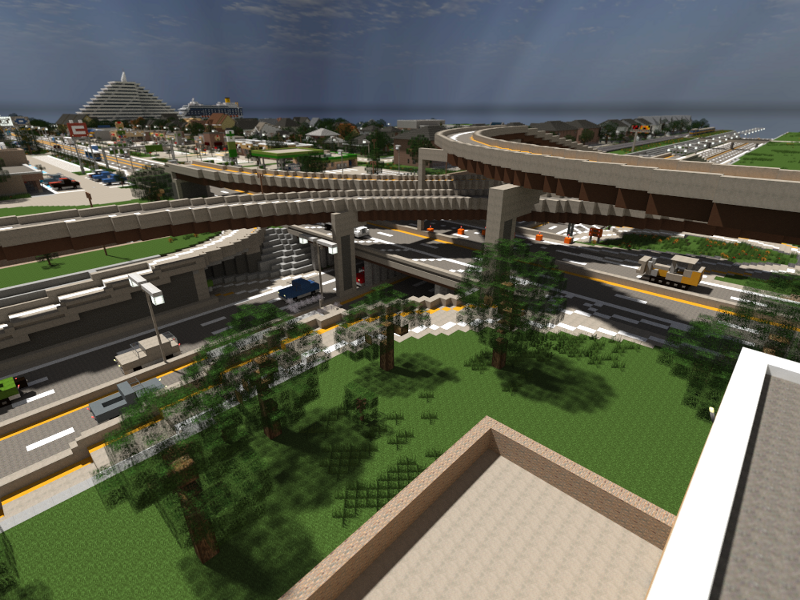As much as I hate what the automobile has done to the US, there’s something beautiful and captivating about that most car-ly of engineering projects, the highway interchange.
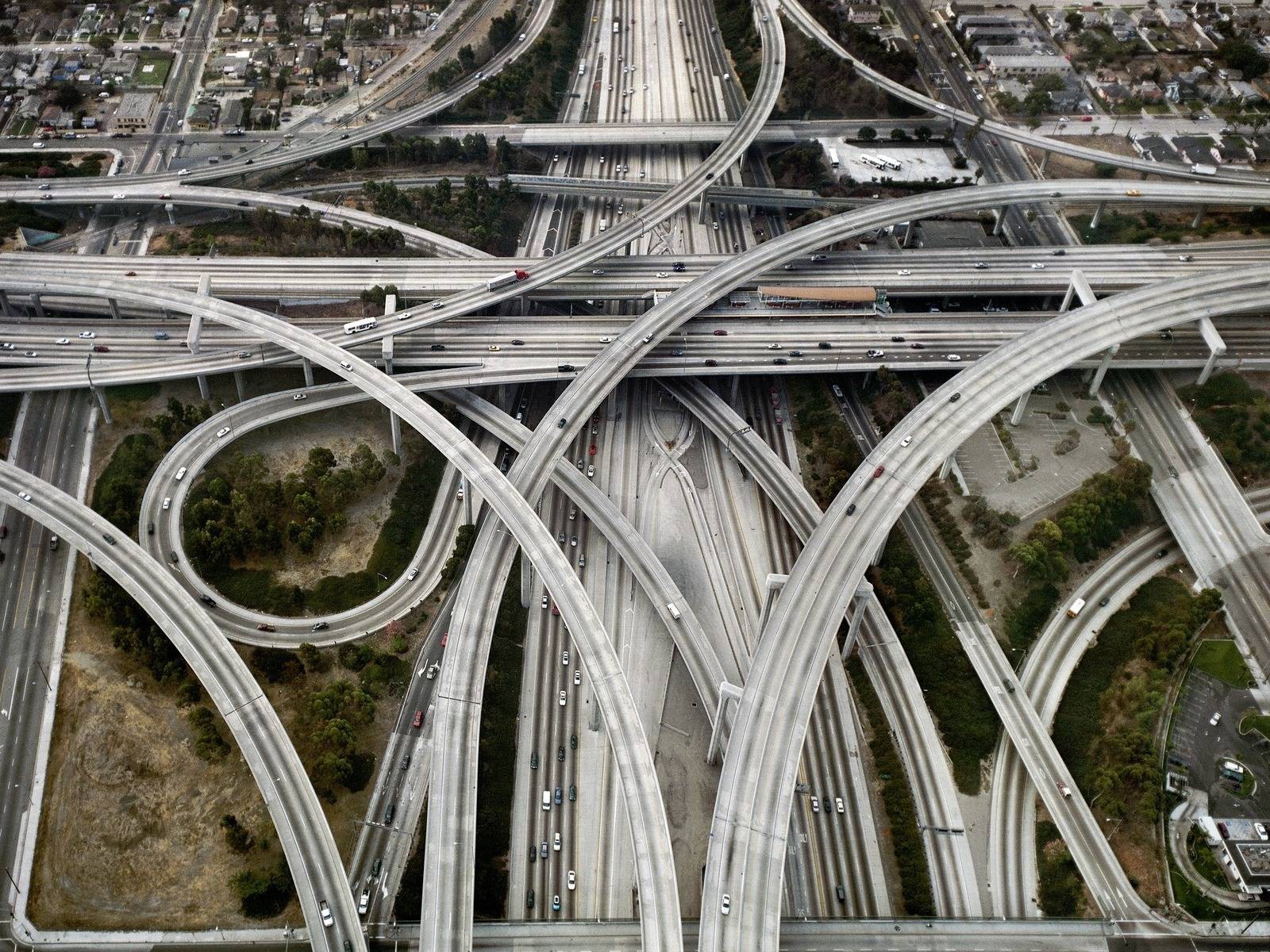
Those soaring twice-differentiable curves! Those delicately placed supporting pillars! The whole thing is an artwork, braiding hundreds of speeding chunks of metal between each other simply by its shape. The Wikipedia page on highway interchanges is full of amazing terms like “synchronized split-phasing intersection”, and you definitely want to read it.
You’d think that there might be a fairly limited number of kinds of interchange — after all, there are only so many ways roads can meet, right? But it turns out there’s a massive variety! In wide open spaces like the midwestern US you end up with cookie-cutter interchanges (usually a diamond interchange between a highway and a smaller road, or a cloverleaf between two highways at right-angles), but in cities and denser spaces, the constraints imposed by the available space make for much more interesting and unique designs (albeit often somewhat difficult to navigate, but that’s ok — catch the train and you won’t have to!).
For example, the Macarthur Maze in Oakland, which is sort of a weaving stack of linguini over a railroad, joining highways in five directions:
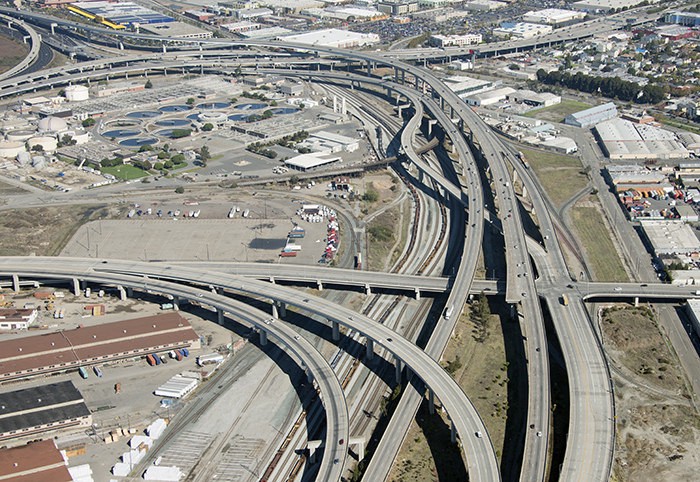
Or this five-level stack interchange in Dallas:
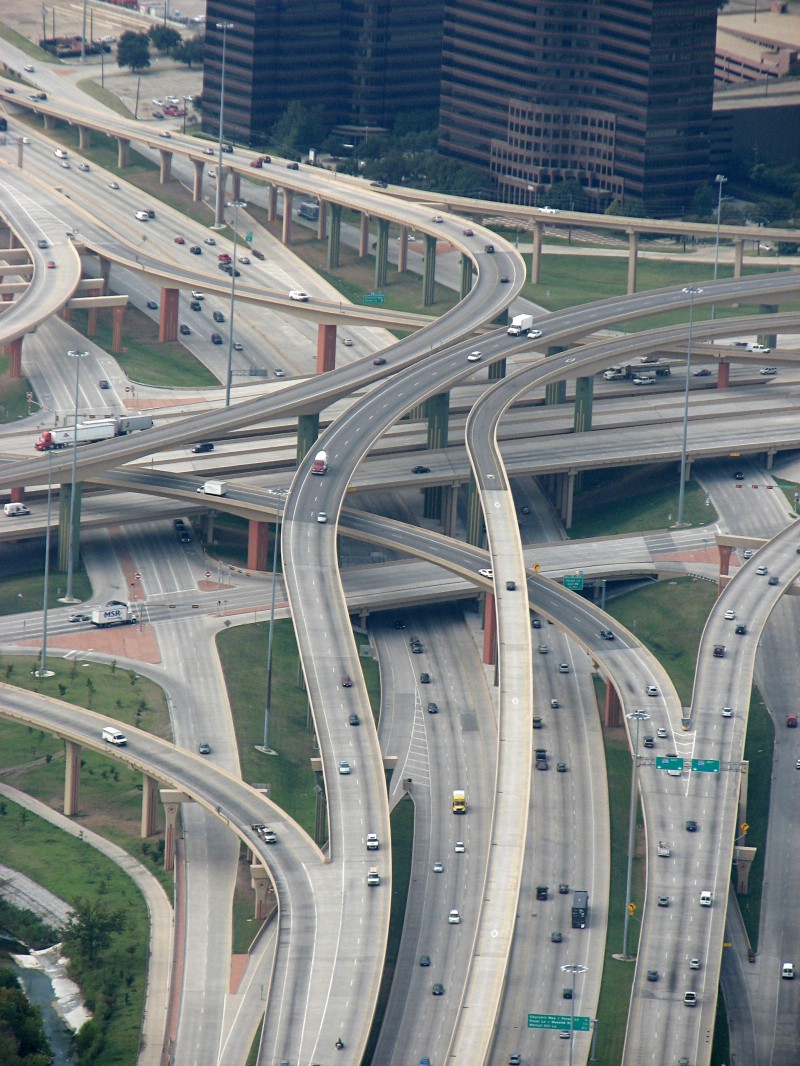
One super interesting kind of interchange (at least, interesting to giant nerd me) is the diverging diamond interchange. In a diverging diamond interchange, traffic drives on the opposite side of the road in the middle of the interchange. Crossing over to the other side of the road gives both directions of traffic the opportunity to exit to the other side.
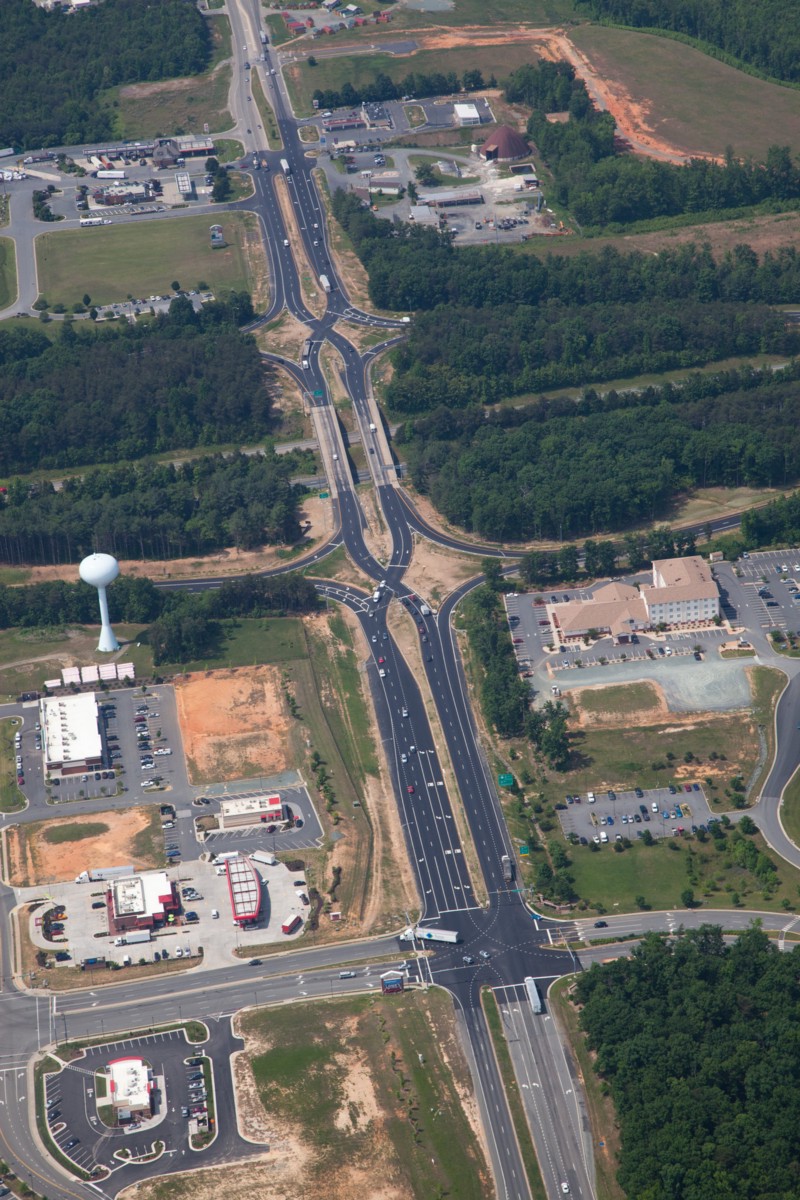

DDIs require a traffic signal at the crossover points, but the two signals are in phase and have relatively short signal times. Traffic in one direction (e.g. west to east in the photo above) is free-flowing, while the opposite direction is stopped by the signal, followed by the reverse. Some bright spark has come up with a bunch of variations on the DDI signal sequence and design, too:
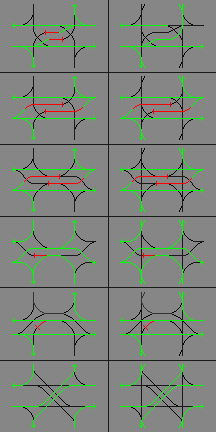
A modification to the DDI called the double crossover merging interchange (DCMI) has been designed and patented (US Patent No. US008950970), but never yet built. The DCMI replaces the traffic signals with grade separation (over/underpasses).
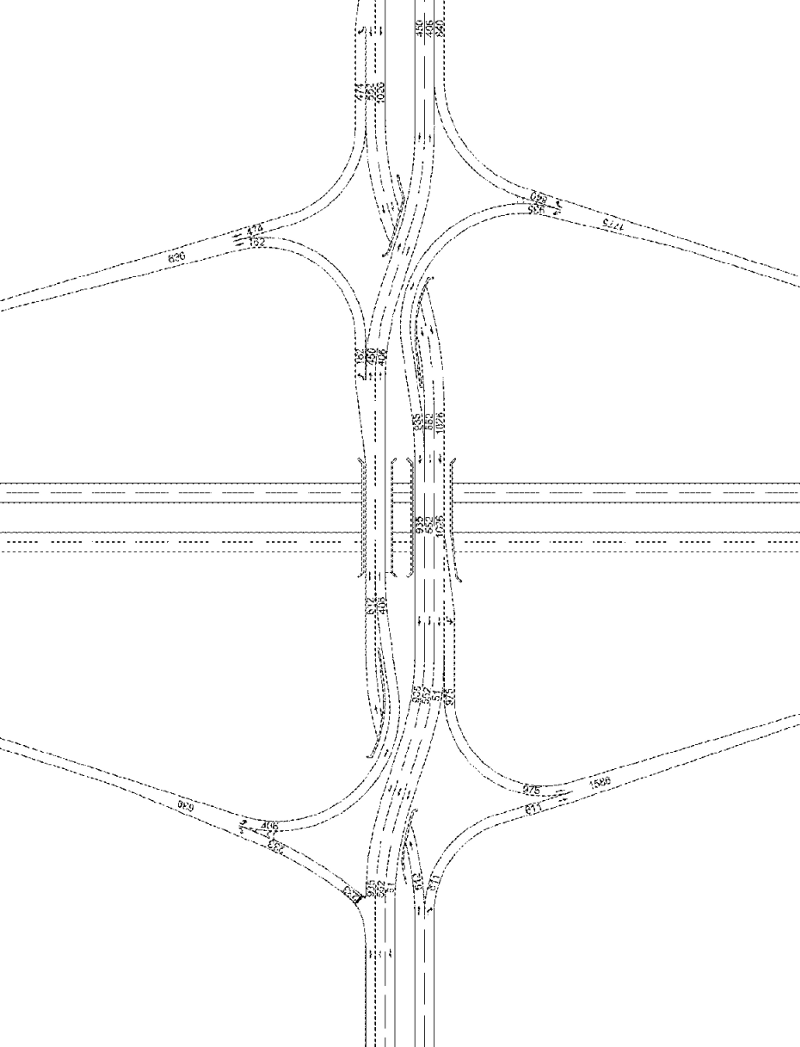
And since I’ve spent far to long on this post, I’m going to close it out with this Minecraft interchange. Bless.
